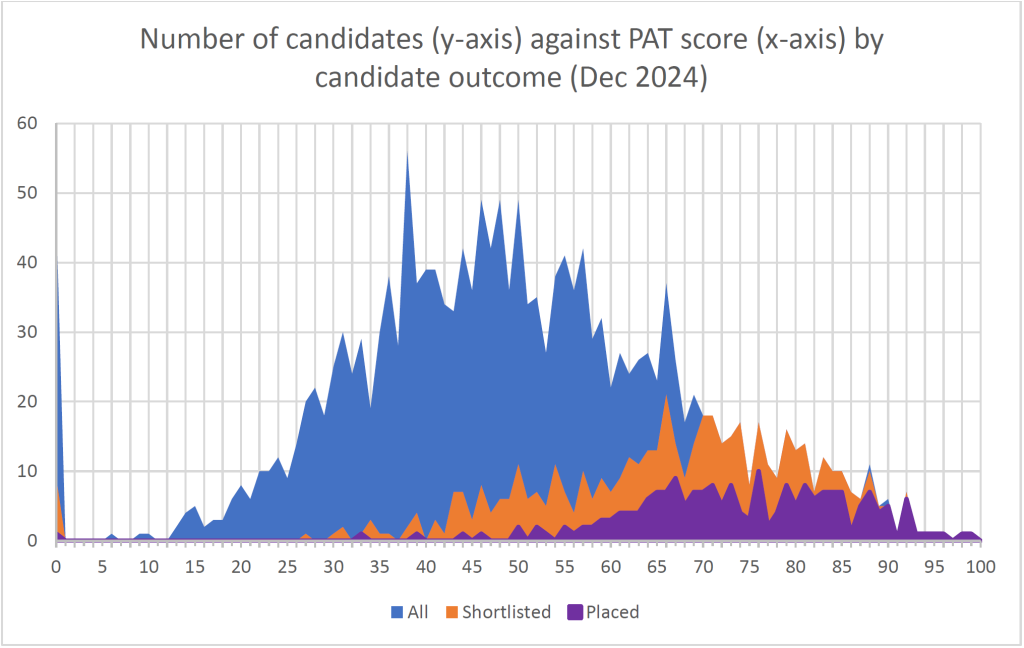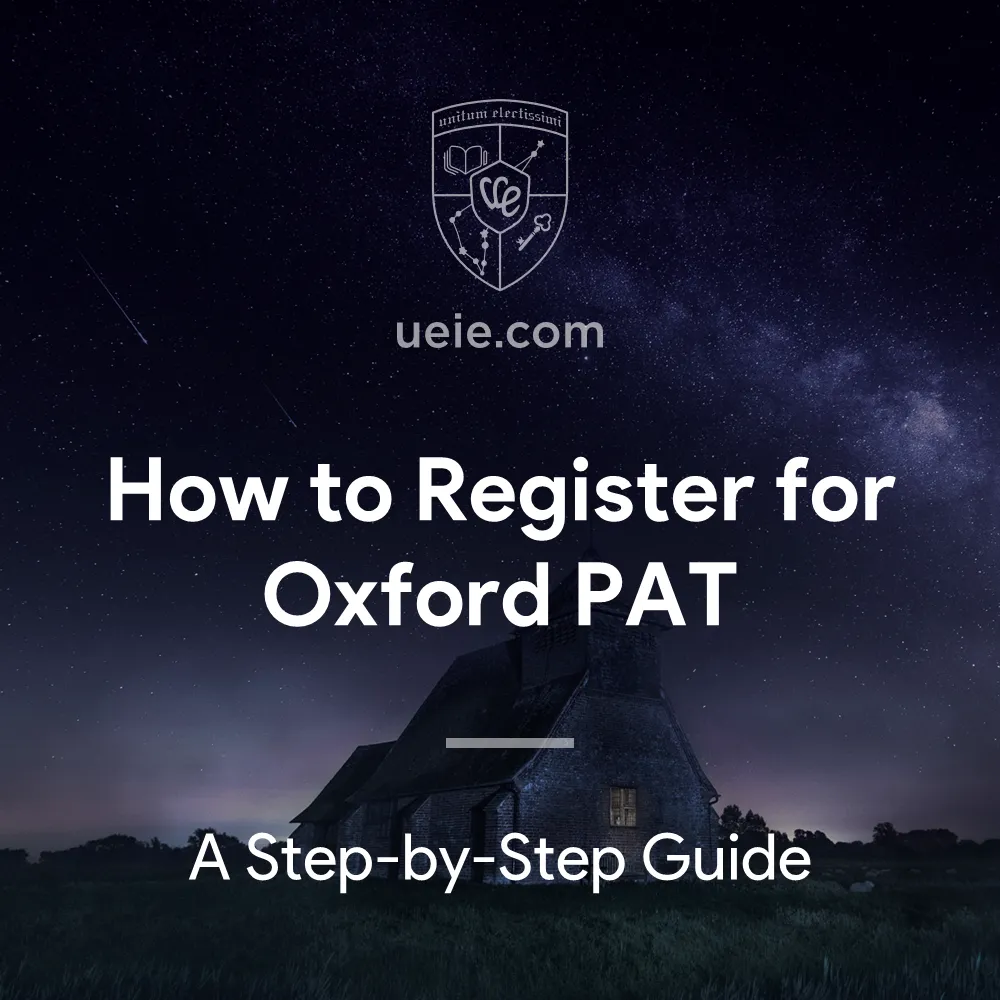Oxford PAT Uncovered: Policy, Syllabus & Key Focus Areas

Independent Teacher
Oxford PAT Uncovered: Policy, Syllabus & Key Focus Areas

The Oxford PAT Test (Physics Aptitude Test) is a crucial entrance examination used by the University of Oxford to assess the overall physics and mathematical ability of undergraduate applicants for its Physics, Engineering Science, and Materials Science programmes. It focuses on evaluating candidates’ ability to solve problems using physics principles and mathematical tools. For students targeting these programmes, a thorough understanding of the Oxford PAT (especially its latest online format) requirements, content, and assessment methods is vital. To help those planning to apply for 2026 entry accurately grasp the latest exam situation, this article will provide a comprehensive and authoritative interpretation.
After gaining a detailed understanding of the Oxford PAT overview, it is recommended to continue reading my (Mr. Xie Tao’s) series of articles: Oxford PAT Preparation Guide and Oxford PAT Registration Guide, for detailed preparation strategies and registration guidance.
I. Latest Updates on Oxford PAT Test
The PAT test has undergone significant adjustments in recent years. Understanding these core changes, which have been implemented and will continue for the 2025 examination cycle (for 2026 entry), is crucial for preparation.
1. Oxford PAT Test Organisation and Implementation
From 2024 onwards, the University of Oxford has appointed Pearson VUE as the global implementing body for the PAT and other entrance examinations, responsible for test centre arrangements and online testing. However, the examination papers are still set by the Oxford University Physics Department, ensuring the authority and continuity of the exam content and assessment standards.
2. Key Changes
- Fully Online Computer-Based Test: The PAT test has completely transitioned to an online format, conducted at Pearson VUE certified test centres, no longer using paper scripts.
- Question Type Adjustments: All examination questions are now multiple-choice. According to the 2024 papers and official sample questions, this includes both Single Choice and Multiple Choice/Multiple Response formats. The number of questions has also increased to 40.
- Scoring Method: The total mark for the entire paper remains 100, but the 40 multiple-choice questions have unequal values (possibly 2, 3, or 4 marks).
- Calculator: The test system will include an online digital calculator. Candidates must use this online calculator, and bringing or using any personal calculator is strictly prohibited.
II. Who Needs to Take the PAT Test? (For 2026 Entry)
The Oxford PAT is a mandatory entrance examination for applicants to the following specific undergraduate (or integrated Master’s) programmes at the University of Oxford, It must be taken and typically cannot be substituted with other examinations:
| Courses | UCAS Code |
|---|---|
| Engineering Science | H100 |
| Biomedical Engineering | H811 |
| Chemical Engineering |
H800 |
| Civil Engineering |
H200 |
| Electrical Engineering |
H620 |
| Information Engineering |
H630 |
| Mechanical Engineering |
H300 |
| Materials Science |
FJ22 |
| Physics | F303 |
| Physics and Philosophy |
VF53 |
III. Oxford PAT Key Dates
| Event | Date / Timeframe | Notes / Reminders |
|---|---|---|
| Registration Time | 18 June to 19 September 2025 | Requires creating an account via the Oxford official website. |
| Test Slot Registration | 18 August to 26 September 2025 | Must complete Pearson VUE test slot booking before this date. |
| Test Dates | 22 October 2025 (Wednesday) and 23 October 2025 (Thursday) | Choose a specific test session in the Pearson VUE system. |
| Interview Invites | November to December 2025 | Sent via email after the University of Oxford completes initial screening. |
| Results Access | January 2026 | Issued to candidates via the examination registration platform (or email). |
Important Note: All dates (especially the specific start and end times for registration) are subject to change. Please regularly visit the Oxford PAT page on the University of Oxford Admissions website and the Oxford Admissions Testing page on Pearson VUE’s website for the most authoritative official information.
IV. PAT Test Format and Structure
Since 2024, the Oxford PAT test has adopted a new online format and question structure.
| Item | Details |
|---|---|
| Test Mode | Online Computer-based Test |
| Test Location | Global Pearson VUE Certified Test Centres |
| Duration | 2 hours (120 minutes) |
| Questions | 40 multiple-choice questions (including Single Choice and Multiple Choice) |
| Calculator | On-screen calculator provided, no personal calculators allowed |
| Formula Sheet |
Not Permitted |
| Dictionary | Not Permitted |
Key Points of Interpretation:
- Pure Multiple-Choice Format: This is the biggest change. Preparation strategies need to focus more on techniques for solving multiple-choice questions, the ability to quickly judge and differentiate between distractors, as there are no marks for showing working. The coexistence of single and multiple-choice questions adds complexity.
- Online Computer-Based Test and Calculator: Candidates must adapt to the online testing environment and become proficient in using the online calculator provided by the system. They cannot rely on their familiar personal calculators.
- Time Pressure: Completing 40 physics and mathematics multiple-choice questions in 2 hours means an average of only 3 minutes per question, requiring high speed and efficiency in problem-solving.
- Knowledge and Memory: Formula sheets are not allowed, meaning candidates need to firmly memorise all relevant formulas and physical constants within the syllabus.
V. Oxford PAT Scoring Mechanism and Score Interpretation
Understanding how the Oxford PAT test is scored and what the scores represent is crucial for evaluating your competitiveness and setting preparation goals.
1. Scoring Method
- Total Score and Composition: The maximum score for the PAT is 100. The score is entirely derived from the 40 multiple-choice questions (including single and multiple-choice).
- Question Values: The value of each multiple-choice question is not equal and may be weighted differently based on difficulty or other factors (e.g., possibly 2, 3, or 4 marks).
- Scoring Characteristics: Incorrect answers do not incur penalties, encouraging candidates to attempt all questions. The final score is the sum of the marks for correct answers.
2. Score Report
- Internal Use: Oxford University admissions tutors receive all applicants’ PAT scores directly in November, which are used in conjunction with other application materials (such as the cGCSE mentioned below) for interview shortlisting.
- Candidate Access: Candidates can usually only access their specific PAT scores through the examination registration platform after receiving their final application result from the University of Oxford in January of the following year (i.e., January 2026).
3. Score Interpretation and Competitiveness Analysis
Understanding the relative competitiveness of PAT scores is very important, but please note that Oxford University does not set fixed ‘interview score cut-offs’ or ‘admission score cut-offs’. Admission decisions are always based on a comprehensive assessment of all aspects of an applicant’s materials.
Application of R-Score
In recent years (including the 2024 application cycle), the Oxford Physics Department has primarily used the R-score for interview shortlisting. This score combines the PAT score with a contextualised GCSE score indicator called cGCSE:
R-score before interview (%) = PAT score (%) + 10 x cGCSE
Here, cGCSE is a standardised score that measures a student’s GCSE (or IGCSE) performance relative to the context of their school, typically ranging from -3 to +3. Applicants lacking GCSE information (such as some international students) are assigned a neutral score of 0.
Note: There was a subtle but important change in calculating the R-score in 2024: all negative cGCSE scores were ignored in the calculation. This was undoubtedly a significant advantage for students who did not achieve enough A* (8/9) grades in their GCSE or IGCSE subjects.
Interview Shortlisting Threshold
The interview shortlisting threshold varies each year. The blue line in the diagram below represents the interview shortlisting threshold from 2006-2024. For example, applicants with an R-score of 70% or higher in 2024 were automatically included in the interview shortlist. Some candidates with an R-score slightly below this threshold might also be invited for an interview if they had other outstanding background information or special circumstances (including technical issues encountered during the exam).
PAT Score Competitiveness Analysis
- Average Level: The average PAT score for all applicants in the 2024 examination was approximately 49.6% (significantly lower than the 55.6% in 2023). This may be related to the difficulty of the questions in that year, the first time a fully new format was adopted, or disruptive factors during the examination.
- More Competitive: A PAT score of generally above 65% is considered to significantly increase the chances of being invited for an interview.
- Strongly Competitive: A score of 75% or higher is considered a highly competitive score.
- Lower Scores: Scores below 65% generally make it more difficult to secure an interview, unless there are very strong other application highlights or supporting background factors.
Note that since 2024 was the first year the pure multiple-choice online format was used, and the report for that year mentioned disruptive factors, direct comparison with scores from previous years should be done with caution.
After the interview, the final R-score after the interview is calculated based on the PAT score, cGCSE score, and interview score:
R-score after interview = PAT score (%) + 10 x cGCSE + 2 x interview score (%)
Final Admission
The R-score after the interview, calculated through a series of weighted calculations, carries significant weight in the admission decision. However, it is not the only factor influencing the outcome. The Oxford Physics Department will also comprehensively consider other materials such as recommendation letters and personal statements before making the final decision on whether to admit a candidate.

Distribution of PAT Scores and the Number of Admitted Students Published by the Oxford Physics Department in 2024
VI. PAT Test Syllabus and Difficulty Analysis
Accurately understanding the scope and difficulty characteristics of the Oxford PAT is fundamental to developing an effective preparation plan.
1. Syllabus Scope and Version
- Knowledge Base: The PAT syllabus covers the core knowledge points of A-Level Mathematics and AS Physics, as well as some A2 Physics. It is particularly important to note that the syllabus explicitly does not include content from A-Level Further Mathematics.
- Syllabus Version: The current PAT test syllabus is still based on the version revised in 2018. Although the test format has changed, the scope of knowledge remains essentially the same.
2. Syllabus Characteristics
- Concise but In-depth: The official PAT syllabus is very condensed, with the entire content being less than 2 pages of A4 paper. Its design philosophy is not to pursue breadth of knowledge, but rather to deeply examine students’ depth of understanding and ability to apply core physics principles and mathematical tools based on the common foundation of high school curricula in various countries.
- Physics and Mathematics Integration: Questions often tightly integrate physics scenarios with mathematical methods, assessing the ability to apply knowledge comprehensively to solve problems.
3. Knowledge Point Overview
According to the official syllabus, the main areas of examination include:
Mathematics Section
- Basic Mathematics: Arithmetic, Geometry (including coordinate geometry), basic Probability.
- Algebra: Polynomials (including solutions to quadratic equations, factorisation), Inequalities, Graphs of Functions (including transformations, finding stationary points using derivatives), Trigonometric Functions (basic relationships), Indices and Logarithms, Sequences and Series (sum of arithmetic and geometric series), Binomial Theorem (positive integer indices).
- Calculus: Differentiation and Integration of Polynomials (including negative and fractional indices), using differentiation to find gradients/extrema, using integration to find areas, simplifying integrals using symmetry.
Physics Section
- Mechanics: Kinematics (distance, velocity, acceleration, SUVAT equations), Newton’s Laws, Circular Motion, Common Forces (gravity, friction, tension, etc.), Moments, Energy and Momentum (conservation laws, work, power), Springs (Hooke’s Law, elastic potential energy).
- Waves and Optics: Basic properties of waves (transverse/longitudinal waves, amplitude, frequency, wavelength, wave speed), Electromagnetic Spectrum, Reflection and Refraction (Snell’s Law), Interference and Diffraction (concepts), Standing Waves (basic concepts).
- Electromagnetism: Basic Circuits (current, voltage, resistance, Ohm’s Law, series and parallel circuits, power), Electric Fields (force between point charges, force on a charge in a uniform electric field), Magnetic Fields (basic concepts, possibly involving simple applications such as Lorentz force, see syllabus for details), Photoelectric Effect (concept).
- Modern Physics and Astronomy: Atomic Structure (Rutherford model, Bohr model), Solar System Objects (basic knowledge of planets, moons, comets, etc.), Orbital Motion (speed, period, centripetal force/acceleration in circular orbits, involving universal gravitation).
- Thermodynamics: Not included in the 2018 version of the Oxford PAT syllabus, and there have been no thermodynamics questions in the last five years.
4. Understanding 'Beyond Syllabus' Questions and Difficulty Analysis
Understanding ‘Beyond Syllabus’
So-called ‘beyond syllabus’ questions in the PAT typically do not test knowledge points outside the syllabus. Instead, they involve applying knowledge from within the syllabus in novel or unfamiliar ways, or they might cover physical models or ideas commonly seen in physics competitions but only briefly touched upon at A-Level. For these types of questions, necessary background information or formulas are often provided in the question.
Difficulty Characteristics
- Higher than A-Level: The PAT demands a depth of thinking, physical intuition, and mathematical application ability far exceeding that of standard A-Level examinations.
- Compared to MAT/STEP: Compared to MAT (primarily pure mathematics), the PAT requires proficiency in both physics and mathematics; compared to STEP (focusing on higher-level pure mathematics proofs), the mathematical difficulty of the PAT is lower, but the application of physics and integrated requirements are higher.
- Impact of Pure Multiple-Choice Questions: Following the reform to pure multiple-choice questions, although there is no opportunity to demonstrate detailed working, the requirement for accuracy in conceptual differentiation, rapid modelling and estimation skills, and multiple-choice strategies (including handling multi-select questions) is higher.
- Difficulty Level Reference: The average PAT scores in recent years (e.g., approximately 49.6% in the 2024 exam ) are generally not high, and scores fluctuate significantly (the average score in 2024 showed a notable decrease compared to 2023). This reflects the high challenge of the examination itself. Achieving a high score requires a solid foundation and excellent comprehensive ability.
VII. How to Register for the Oxford PAT Test?
Registering for the Oxford PAT primarily involves creating an account on the University of Oxford’s official website, linking your application information, and then completing the specific test centre and examination time booking through the Pearson VUE platform.
The specific registration steps, required information, test centre selection, fee details, special requirements applications, and detailed guidance for candidates from different regions are all very important and may involve many details.
For the most complete and accurate step-by-step guidance, please refer to our specially prepared detailed guide:

How to Register for Oxford PAT
VIII. Core Preparation Strategies and Resource Recommendations
Effective preparation not only requires understanding the examination itself but also clarifying the preparation direction and making good use of high-quality resources.
1. Overview of Core Preparation Strategies
The core of PAT preparation lies in a solid foundation of physics and mathematics knowledge, strong problem-solving skills, and adapting to the pure multiple-choice online examination format. Preparation should focus on:
- Consolidating Foundation: Ensuring a deep understanding of all physics and mathematics concepts within the syllabus.
- Improving Application: Training the ability to apply foundational knowledge to complex and unfamiliar situations.
- Practice Strategies: Mastering the techniques for answering multiple-choice questions (including single and multiple-select) and time management.
- Familiarising with the Platform: Adapting to the online examination environment and the use of the online calculator.
For detailed preparation plans, phased training methods, targeted skill enhancement techniques, etc., please be sure to read my specially authored:

Ace the Oxford PAT: Mastering Maths, Physics & Online Test Skills
2. Official Core Preparation Resources
The official website of the Oxford University Physics Department is the primary platform for obtaining the most authoritative PAT preparation information and materials. All candidates are strongly advised to make full use of the abundant resources it provides:
- Examination Syllabus: Clearly defines the scope of the examination (currently still the 2018 version).
- Past Papers: Provides a large number of past test papers. Note: Pre-2024 papers had different formats. They included written tests and non-multiple-choice questions. But their content and difficulty remain highly valuable. These help understand syllabus requirements and needed abilities.
- Official Online Sample Questions/Practice Tests: The official website or Pearson VUE provides sample questions or practice tests simulating the new online multiple-choice format. It is highly recommended to use these to familiarise yourself with the examination interface and online calculator.
- Annual Reports: Provide important information such as statistical data, average scores, and screening processes from previous years.
- ‘Preparing for the PAT’ Online Course: A free online preparation support programme provided by the Oxford Physics Department, including problem sets, videos, lectures, etc..
3. UEIE Oxford PAT Preparation Resources
I help candidates prepare for PAT systematically. My courses build on years of teaching research. I continuously update preparation materials. This year’s new self-study package includes:
- Oxford PAT Video Lecture Series: Includes in-depth explanation of exam points and accompanying PDF textbooks.
- Oxford PAT Practice Question Bank: Offers an extensive range of topic-based practice questions, designed to supplement the limited number of official past papers and strengthen problem-solving skills.
- Oxford PAT Full-Length Mock Exams: Four full-length simulation papers, featuring entirely original or adapted questions that do not reuse past paper content. These are ideal for refining your exam strategy and ensuring you are in peak condition before the test.
Click to learn more about UEIE PAT preparation resources:

ESAT & PAT On-Demand Prep Suite
US$607 – US$2 407Price range: US$607 through US$2 407
4. Other Supplementary Resources
Based on official Oxford recommendations and preparation needs, the following can be selectively used:
- Isaac Physics: Provides a large number of high-quality physics and mathematics problems.
- British Physics Olympiad (BPhO) Past Papers: The style of questions helps develop the ability to solve challenging problems.
- Other Online Platforms or Books: Such as resources compiled by Physics & Maths Tutor (PMT), some physics/mathematics thinking training books, etc..
5. Core Recommendations
It is crucial that official resources form the core of your preparation, especially past papers (bearing in mind the changes in format) and the online practice tests. Depending on your individual needs, carefully select high-quality supplementary materials (such as UEIE’s systematic preparation plans or other officially recommended websites) to support your systematic learning and targeted practice. Finally, ensure you utilise the official Pearson VUE online practice tests to familiarise yourself thoroughly with the computer-based testing environment and the online calculator.
IX. Suggested Next Steps
After reading this Oxford PAT Comprehensive Guide, you should have a clear grasp of the key information about this test. To translate this understanding into effective application preparation, we recommend that you take the following actions immediately:
1. Verify Official Requirements
Revisit the official University of Oxford admissions website (especially the pages for Physics, Engineering Science, Materials Science, and other relevant departments) to carefully confirm the latest and most accurate admission requirements for 2026 entry, including whether the PAT is still mandatory and the specific programmes it applies to.
2. Plan Your Exam Registration
Consult the detailed Oxford PAT Registration Guide to understand the registration process, deadlines, and required materials.
Remember the official start and end dates for registration and be sure to complete all registration and Pearson VUE test slot booking steps before these dates.
3. Develop a Preparation Plan
Read the Oxford PAT Preparation Guide and develop a systematic, personalised preparation timetable and learning strategy based on your own circumstances (physics and mathematics foundation and available time). Start preparing as early as possible; PAT preparation requires a comprehensive and in-depth improvement of physics and mathematics abilities.
4. Select and Utilise Resources
- Make good use of official core resources: Download and study the latest examination syllabus, past papers (noting format changes), online sample questions, and preparation course materials provided on the Oxford Physics Department official website.
- Selective supplementary: Based on your preparation plan, carefully select high-quality supplementary resources, such as UEIE’s PAT preparation lectures and materials, or other officially recommended practice platforms, for systematic learning and targeted training.
- Familiarise yourself with the platform: Be sure to use the official Pearson VUE online practice tests to familiarise yourself with the computer-based testing environment and online calculator.

Oxford PAT Prep Hub
Finally, please remember that thorough preparation and a positive mindset are key to facing the PAT challenge. We wish you a smooth preparation, a successful application, and ultimately, admission to your desired university!
Follow Us on Wechat

- Categories Admissions Tests
- Tags Apply to Oxford University, Engineering Course, Essential Guide, Oxford PAT, Physics Course


